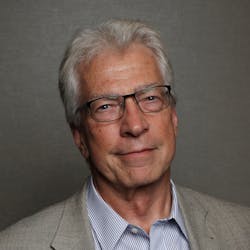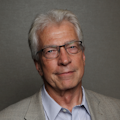
To understand the emerging framework for photonics R&D priorities in the U.S., I urge you to review the recommendations of the Fast-Track Action Committee on Optics and Photonics (FTAC-OP), just released by the National Science and Technology Council. It is not a funding blueprint, but it helps illuminate goals that the U.S. government may pursue.
The FTAC-OP prioritized seven recommendations. For research, they are: 1) biophotonics to advance understanding of systems biology and disease progression; 2) faint to single photonics; 3) imaging through complex media; and 4) ultra-low-power optoelectronics. For research-related capabilities, they are: 1) accessible fabrication facilities; 2) exotic photonics; and 3) domestic sources of critical photonics materials. The recommendations are in line with those of the National Photonics Initiative and may be downloaded at http://1.usa.gov/1r9S6AA.
Support for photonics R&D—and product development—has long been part of CLEO, which takes place in San Jose, CA from June 8 to 13. In addition to technical sessions, special events, and the exhibition, I will be presenting the 2014 CLEO/Laser Focus World Innovation Award. Congratulations to the winner, Daylight Solutions, for its laser-based infrared microscope, and to honorable mentions Aurea Technology for its high-brightness twin-photon source and Hübner for its full-visible-range tunable CW OPO. You can read much more about these innovative products starting on page 29.
And, of course, this issue highlights some of the most cutting-edge developments to be found anywhere in the world, from a special report on the quantum security workshop held during OFC (see page 17) to a feature article by the director of the Shanghai Institute of Optics and Fine Mechanics celebrating 50 years of research into fusion, cold-atom physics, and high-power laser materials (see page 33). With coverage of other fields such as optofluidics (see page 59), optical fiber for medical applications (see page 47), a new generation of mid-IR lasers (see page 63), and novel fiber lasers (see page 51), I think you will find resources for whichever directions global photonics research is headed.
About the Author

Conard Holton
Conard Holton has 25 years of science and technology editing and writing experience. He was formerly a staff member and consultant for government agencies such as the New York State Energy Research and Development Authority and the International Atomic Energy Agency, and engineering companies such as Bechtel. He joined Laser Focus World in 1997 as senior editor, becoming editor in chief of WDM Solutions, which he founded in 1999. In 2003 he joined Vision Systems Design as editor in chief, while continuing as contributing editor at Laser Focus World. Conard became editor in chief of Laser Focus World in August 2011, a role in which he served through August 2018. He then served as Editor at Large for Laser Focus World and Co-Chair of the Lasers & Photonics Marketplace Seminar from August 2018 through January 2022. He received his B.A. from the University of Pennsylvania, with additional studies at the Colorado School of Mines and Medill School of Journalism at Northwestern University.